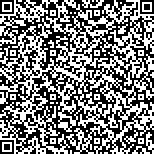| 引用本文: | 潘鑫,杨子,杨英宝,孙怡璇,刘苏仪,谢文英,李藤藤.基于高分六号数据提取太湖蓝藻方法的对比及适用性分析.湖泊科学,2022,34(6):1866-1876. DOI:10.18307/2022.0607 |
| Pan Xin,Yang Zi,Yang Yingbao,Sun Yixuan,Liu Suyi,Xie Wenying,Li Tengteng.Comparison and applicability analysis of methods for extracting cyanobacteria from Lake Taihu based on GF-6 data. J. Lake Sci.2022,34(6):1866-1876. DOI:10.18307/2022.0607 |
|
| |
|
|
| 本文已被:浏览 3789次 下载 2894次 |

码上扫一扫! |
|
|
| 基于高分六号数据提取太湖蓝藻方法的对比及适用性分析 |
|
潘鑫1,2, 杨子1,2, 杨英宝1,2, 孙怡璇1,2, 刘苏仪1,2, 谢文英1,2, 李藤藤1,2
|
|
1.河海大学地球科学与工程学院, 南京 211100;2.河海大学江苏省水资源环境遥感监测评估工程研究中心, 南京 211100
|
|
| 摘要: |
| 以往对太湖蓝藻提取的研究中,较少将国内高分系列卫星影像作为数据源.为此本文基于2019年太湖不同蓝藻暴发时期的高分六号数据,采用随机森林(random forest,RF)法、归一化植被指数(normalized differential vegetation index,NDVI)阈值法和多光谱绿潮指数(multispectral green tide index,MGTI)阈值法对太湖蓝藻进行提取以寻求提取太湖蓝藻的最佳方法,并在此基础之上探讨了RF不同输入变量的适用性.结果表明,2019年太湖南岸和梅梁湖的蓝藻水华富营养化较为严重,NDVI阈值法明显将部分轻度蓝藻漏提,MGTI阈值法对中、重度蓝藻的识别能力不如NDVI法,而RF法能够有效地提取太湖蓝藻.其中将归一化植被指数和归一化水体指数作为输入变量的RF法提取中型暴发期的太湖蓝藻精度最高,总体分类精度和Kappa系数分别为99%和0.97.研究太湖蓝藻的提取方法对太湖的环境治理提供了技术支持,也为其他湖泊蓝藻的遥感监测提供了科学依据. |
| 关键词: 太湖 蓝藻提取 精度评定 方法适用性分析 |
| DOI:10.18307/2022.0607 |
| 分类号: |
| 基金项目:国家自然科学基金项目(41701487,42071346)、中央高校基本科研业务费专项(2019B02714)和国家留学基金项目联合资助. |
|
| Comparison and applicability analysis of methods for extracting cyanobacteria from Lake Taihu based on GF-6 data |
|
Pan Xin1,2, Yang Zi1,2, Yang Yingbao1,2, Sun Yixuan1,2, Liu Suyi1,2, Xie Wenying1,2, Li Tengteng1,2
|
|
1.School of Earth Sciences and Engineering, Hohai University, Nanjing 211100, P. R. China;2.Jiangsu Province Engineering Research Center of Water Resources and Environment Assessment Using Remote Sensing, Hohai University, Nanjing 211100, P. R. China
|
| Abstract: |
| In previous studies on the extraction of cyanobacteria from Lake Taihu, the domestic satellite images of the GF series are seldom used as data sources. So this paper used the random forest(RF) method, normalized vegetation index(NDVI) threshold method and multispectral green tide index(MGTI) threshold method to extract cyanobacteria from Lake Taihu based on GF-6 data during different outbreak periods to seek the best method to extract cyanobacteria from Lake Taihu in 2019. On this basis, the applicability of the RF method based on different input variables extract cyanobacteria were explored. The results showed that cyanobacteria blooms and eutrophication were serious near the southern shore of Lake Taihu and Lake Meiliang in 2019. Some mild cyanobacteria were identified by the NDVI threshold method. The identification ability of moderate and severe cyanobacteria by the MGTI threshold method was not as good as that by the NDVI method, while the RF method could effectively extract cyanobacteria from Lake Taihu. The RF method with normalized vegetation index and normalized water index as input variables was the most accurate method for extracting cyanobacteria from Lake Taihu during the medium outbreak stage. Its overall classification accuracy and Kappa coefficient are 99% and 0.97, respectively. The research on the extraction method of cyanobacteria provides technical support for controlling the environment of Lake Taihu and a scientific basis for monitoring cyanobacteria by remote sensing in other lakes. |
| Key words: Lake Taihu cyanobacterial extraction accuracy assessment applicability analysis of method |
|
|
附件
|
|